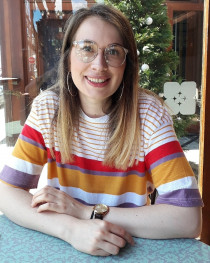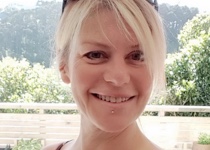What does good look like for a citizen, a cultural group or as a country? Is it about having enough money, a healthy environment, a strong economy, a secure sense of wellbeing or a government that is trusted?
As a New Zealand government service innovation lab, ‘what good looks like’ matters to us. We want to know that the services we develop in collaboration with agencies are ‘good’ for the people who will use them. We believe good services are services which contribute to the good of citizens, cultural groups, the country and even the global community. Therefore, it is important to know what good looks like on all of these levels so we can design our services accordingly. There are a number of frameworks that attempt to help with this. They provide insight on how to assess and measure ‘what good looks like’ at a national and international level.
What are these Frameworks?
OECD’s Better Life Index: Developed by the Organisation for Economic Co-operation and Development (OECD), the Better Life Index allows you to compare wellbeing across countries. It is based on 11 topics, in areas of material living conditions and quality of life that the OECD has identified as essential. The OECD collects data across countries, with a mission to promote government policies that improve the economic and social wellbeing of people around the world.
The OECD has statistical profiles on a large number of countries, including New Zealand. These profiles comprise a range of topics, such as agriculture, government and finance. The topics are further broken down into a range of indicators that make-up economic and social well-being. From this information, the Better Life Index is generated.
Triple Bottom Line (TBL): Like the Better Life Index, the TBL also provides a globally applicable framework, but specific to business rather than country. The Triple Bottom Line framework suggests ‘what good looks like’ for business success goes beyond financial measures. TBL expands the traditional focus on the financial bottom line to include social and environmental considerations. Simply put, the TBL considers businesses impact on "people, profits and planet.”
Living Standards Framework (LSF): The Treasury New Zealand has developed a Living Standards Framework specific to our country. It uses the OECD Better Life Index criteria with an added category of ‘Cultural Identity’. The LSF aims to show ‘what good looks like’ by charting New Zealand’s average level of current wellbeing by organising wellbeing into four capitals: Natural, Social, Human and Financial/Physical. To help analyse and measure intergenerational wellbeing the Treasury has built the LSF Dashboard. This builds on “30 years of research; informed by public feedback, submissions,” from national and international sources.
He oranga mo Aotearoa - Māori wellbeing for all: ‘What good looks like’ for Māori wellbeing is not the same as for non-Māori, due to differing cultural needs and other compounding factors. The He oranga mo Aotearoa report states “Māori wellbeing is based on our status as tangata whenua – in order to succeed we must succeed as Māori” and goes on to consider various Māori wellbeing frameworks and measures. It outlines how “a universal approach to wellbeing fails to address the needs of all Māori, but argues that Māori wellbeing is not only possible for New Zealand but, would benefit Māori and non-Māori alike”. Ngā tohu tautoko (Pathways to success), a practical framework included in the report, offers a guide to achieving some of ‘what good looks like’ for Māori wellbeing needs.
Nesta Standards of Evidence: Nesta are a well-regarded global innovation foundation that focuses on how we meet the challenges facing society. The Standards of Evidence is a practical approach that aims to ensure innovations in public service design are developed with “academically recognised levels of rigour”. Both innovators and service users need to know whether the products or services being developed, bought or invested in, are making a positive difference. Applying the Standards of Evidence is an approach for designing-in and measuring ‘what good looks like’.
What they mean for us
These frameworks give us, as a service innovation lab, an indication of what good looks like. We have the OECD’s global view and the Triple Bottom Lines’ business view. The Living Standards Framework suggests what’s good at a national level and the He oranga mo Aotearoa report does the same at a cultural level. These four frameworks establish that ‘good’ is more than economic viability alone and that the many facets of wellbeing can be considered as globally recognised definitions of what good looks like.
Nesta’s Standards of Evidence are important for wellbeing: if public service design follows good standards of practice toward meeting the indicators for wellbeing, then designers are more likely to create good quality services. This will positively impact the wellbeing of the people who use them.
How do we know if we are doing ‘good’?
This is the question we ask ourselves: if we develop ‘quality’ projects by establishing what ‘good looks like’, will that then create impactful outcomes for our end users?
In answer to this, the Service Innovation Lab is developing a measurements framework that can provide information on the quality of our projects. The data collected will then be displayed via an analytics dashboard that tracks the ‘quality’ of the work through charts and graphs. The measurement data will not only show how the Service Innovation Lab functions in terms of metrics but also the levels of confidence (quality) ourselves and users have in the services under development. This will give us an indication of how we are meeting ‘what good looks like’ in a wellbeing context.
Why do this work? As a public service, it’s our responsibility to make sure our citizens can use our services with comfort and ease. We have a duty to look after the wellbeing of the people we serve, not to add to their frustrations or increase their burden. Understanding what good looks like is an essential step towards this, and these wellbeing frameworks will help us get there.
If you'd like to stay across the work from the Service Innovation Lab, please join our mailing list.



